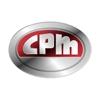Farinha de insetos como alternativa na alimentação de galinhas poedeiras
A farinha de insetos é considerada como uma fonte alternativa de vários nutrientes, ganhando destaque principalmente por seus altos índices proteicos e grande quantidade de gordura. Além dos seus benefícios nutricionais, diversos estudos demonstram que a sua utilização pode ser considerada uma solução mais sustentável e tecnicamente viável, logo, demonstrando ser um substituto promissor aos ingredientes proteicos normalmente utilizados. A presente revisão teve como objetivo descrever os resultados mais recentes sob o uso dos insetos na alimentação de galinhas poedeiras. Foi realizado um compilado de trabalhos sobre a utilização de farinha de insetos na alimentação de galinhas poedeiras sobre índices de produção, saúde e desempenho, utilizando as plataformas de pesquisa Scielo, Google Acadêmico e Portal Capes. Concluímos que é possível substituir gradualmente o ingrediente proteico por farinha de insetos em dietas na avicultura de postura, possibilitando melhoria na qualidade e quantidade de ovos.
Palavras-chave: Alimentação animal; Alimentos alternativos; Avicultura; Desempenho produtivo.
1. Introdução
2. Metodologia

3. Resultados e Discussão
3.1 Aspectos sustentáveis e econômicos
3.2 Saúde
3.3 Desempenho para galinhas poedeiras
4. Conclusão
- Licença
- CC POR 4.0
Arantes, V. M., Marchini, C. F. P., & Kamimura, R. (2021). Agregação de valor à nutrição a partir do uso de farinha de insetos: aves e suínos. In R. L. Galati, & M. F. S. Queiroz (Org.). Inovações na Nutrição Animal: Desafios da Produção de Qualidade. (Cap 2, pp. 26- 48). Editora Científica.
Bovera, F., Loponte, R., Pero, M. E., Cutrignelli, M. I., Calabrò, S., Musco, N., Vassalotti, G., Panettieri, V., Lombardi, P., Piccolo, G., Di Meo, C., Siddi, G., Fliegerova, K., & Moniello, G. (2018). Laying performance, blood profiles, nutrient digestibility and inner organs traits of hens fed an insect meal from Hermetia illucens larvae. Research in Veterinary Science, 120, 86-93.
Brah, N., Salissou, I., & Houndonougbo, F. (2017). Effect of grasshopper meal on laying hens’ performance and egg quality characteristics. Indian J. Anim. Sci, 87, 1005-1010.
Cutrignelli, M. I., Messina, M., Tulli, F., Randazzo, B., Olivotto, I., Gasco, L., Loponte, R., & Bovera, F. (2018). Evaluation of an insect meal of the Black Soldier Fly (Hermetia illucens) as soybean substitute: Intestinal morphometry, enzymatic and microbial activity in laying hens. Research in Veterinary Science, 117, 209-215.
De Oliveira, C. W., Reis, T. L., Mendonça, L. V. P., & Lima Filho, M. (2020). Farinhas de insetos na avicultura industrial. Brazilian Journal of Development, 6(1), 722-728.
FAO (Food and Agriculture Organization of the United Nations). (2013). Edible insects. Future prospects for food and feed security. Van Huis, A., Van Itterbeeck, J., Klunder, H., Mertens, E., Halloran, A., Muir, G. & Vantomme P. Rome.
Kim, B., Kim, M., Jeong, J. Y., Kim, H. R., Ji, S. Y., Jung, H., & Park, S. H. (2022). Black soldier fly (Hermetia illucens) larvae oil as an alternative fat ingredient to soybean oil in laying hen diets. Animal Bioscience, 35(9), 1408-1417.
Lucas, A. J. D. S. (2021). Insetos na alimentação animal: um panorama geral.
Lucas, A. J. da Silva., De Oliveira, L. M., Da Rocha, M., & Prentice, C. (2020). Edible insects: An alternative of nutritional, functional and bioactive compounds. Food chemistry, 311, 126022.
Marono, S., Loponte, R., Lombardi, P., Vassalotti, G., Pero, M. E., Russo, F., Gasco. L., Parisi. G., Piccolo. G., Nizza. S., Di Meo. C., & Bovera, F. (2017). Productive performance and blood profiles of laying hens fed Hermetia illucens larvae meal as total replacement of soybean meal from 24 to 45 weeks of age. Poultry Science, 96(6), 1783-1790.
Moniello G., Ariano. A., Panettieri. V., Tulli. F., Olivotto. I., Messina. M., Randazzo. B., Severino. L., Piccolo. G., Musco. N., Addeo. N. F., Hassoun. G., & Bovera. F. (2019). Intestinal morphometry, enzymatic and microbial activity in laying hens fed different levels of a Hermetia illucens larvae meal and toxic elements content of the insect meal and diets. Animals, 9(3), 86.
Mwaniki, Z., Neijat, M., & Kiarie, E. (2018). Egg production and quality responses of adding up to 7.5% defatted black soldier fly larvae meal in a corn–soybean meal diet fed to Shaver White Leghorns from wk 19 to 27 of age. Poultry science, 97, 2829-2835.
De Oliveira, L. M., Da Silva Lucas, A. J., Cadaval, C. L., & Mellado, M. S. (2017). Bread enriched with flour from cinereous cockroach (Nauphoeta cinerea). Innovative Food Science & Emerging Technologies, 44, 30-35.
Pereira. A. S., Shitsuka. D. M., Parreira. F. J., & Shitsuka. R. (2018). Metodologia da pesquisa cientifica. UFSM. Reis, T. L., & Dias, A. C. C. (2020). Farinha de insetos na alimentação de não ruminantes, uma alternativa alimentar. Veterinária e Zootecnia, 27, 1-16.
Secci, G., Bovera, F., Nizza, S., Baronti, N., Gasco, L., Conte, G., Serra, A., Bonelli, A., & Parisi. G. (2018). Quality of eggs from Lohmann Brown Classic laying hens fed black soldier fly meal as substitute for soya bean. Animal, 12(10), 2191-2197.
Sheikh, I. U., Banday, M. T., Baba, I. A., Adil, S., Nissa, S. S., Zaffer. B., & Bulbul. K. H. (2018). Utilization of silkworm pupae meal as an alternative source of protein in the diet of livestock and poultry: A review. Journal of Entomology and Zoology Studies, 6(4), 1010-1016.
Sosa, D. A. T., & Fogliano, V. (2017). Potencial of insect-derived ingredients for food applications. In: SCHIELDS, V. D. C. Insect physiology and ecology. InTech Open.
Ullah, R., Khan, S., Khan, N. A., Mobashar, M., Sultan, A., Ahmad, N., & Lohakare, J. (2017). Replacement of soybean meal with silkworm meal in the diets of white leghorn layers and effects on performance, apparent total tract digestibility, blood profile and egg quality. Int J Vet Health Sci Res, 5(7), 200-207.
Van Huis, A. (2020). Insects as food and feed, a new emerging agricultural sector: a review. Journal of Insects as Food and Feed, 6(1), 27-44.
Van Huis, A., Van Itterbeeck, J., Klunder, H., Mertens, E., Halloran, A., Muir, G., & Vantomme, P. (2013). Edible insects: future prospects for food and feed security (No. 171). Food and agriculture organization of the United Nations.













